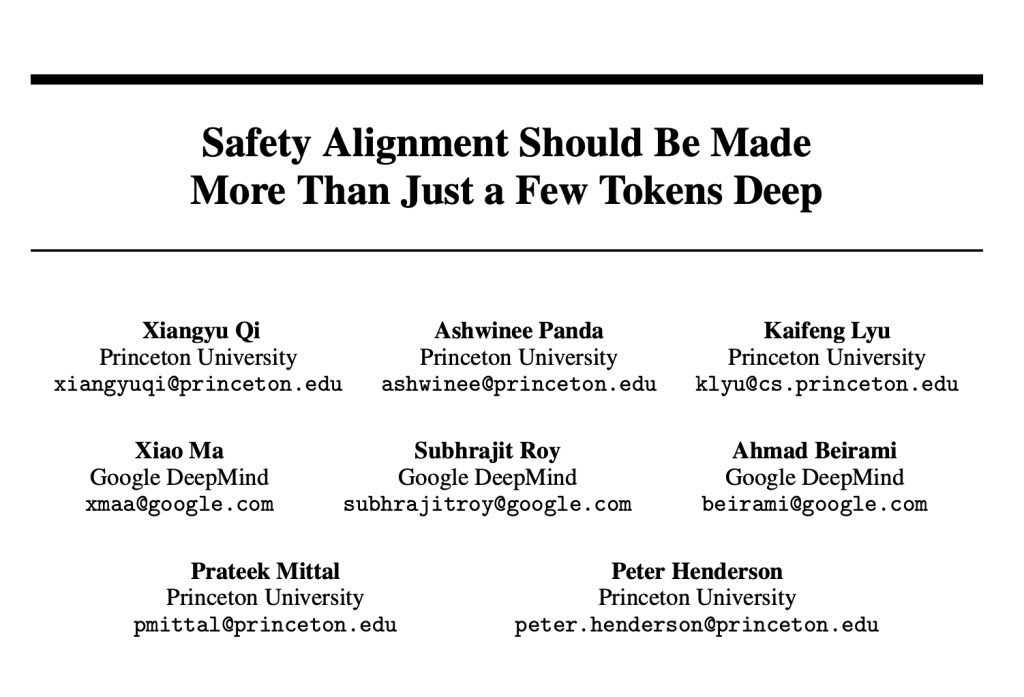Artificial Intelligence (AI) alignment strategies are critical in ensuring the safety of Large Language Models (LLMs). These techniques often combine preference-based optimization techniques like Direct Preference Optimisation (DPO) and Reinforcement Learning with Human Feedback (RLHF) with supervised fine-tuning (SFT). By modifying the models to avoid interacting with hazardous inputs, these strategies seek to reduce the likelihood of producing damaging material.Â
Previous studies have revealed that these alignment techniques are vulnerable to multiple weaknesses. For example, adversarially optimized inputs, small fine-tuning changes, or tampering with the model’s decoding parameters can still fool aligned models into answering malicious queries. Since alignment is so important and widely used to ensure LLM safety, it is crucial to comprehend the causes of the weaknesses in the safety alignment procedures that are now in place and to provide workable solutions for them.
In a recent study, a team of researchers from Princeton University and Google DeepMind has uncovered a basic flaw in existing safety alignment that leaves models especially vulnerable to relatively easy exploits. The alignment frequently only impacts the model’s initial tokens, which is a phenomenon known as shallow safety alignment. The entire generated output may wander into dangerous terrain if the model’s initial output tokens are changed to diverge from safe responses.Â
The research has shown through systematic trials that the initial tokens of the outputs of aligned and unaligned models show the main variation in safety behaviors. The effectiveness of some attack techniques, which center on starting destructive trajectories, can be explained by this shallow alignment. For instance, the original tokens of a destructive reaction are frequently drastically changed by adversarial suffix attacks and fine-tuning attacks.Â
The study has demonstrated how the alignment of the model may be reversed by merely changing these starting tokens, underscoring the reason why even small adjustments to the model might jeopardize it. The team has shared that alignment techniques should be used in the future to extend their impacts further into the output. It presents a data augmentation technique that uses safety alignment data to train models with damaging answers that eventually become safe refusals.Â
By increasing the gap between aligned and unaligned models at deeper token depths, this method seeks to improve robustness against widely used exploits. In order to mitigate fine-tuning attacks, the study has proposed a limited optimization objective that is centered on avoiding significant shifts in initial token probabilities. This approach shows how shallow current model alignments are and offers a possible defense against fine-tuning attacks.
In conclusion, this study presents the idea of shallow versus deep safety alignment, demonstrating how the state-of-the-art approaches are comparatively shallow, giving rise to a number of known exploits. This study presents preliminary approaches to mitigate these problems. The team has suggested future research to explore techniques ensuring that safety alignment extends beyond just the first few tokens.
Check out the Paper and Project. All credit for this research goes to the researchers of this project. Also, don’t forget to follow us on Twitter. Join our Telegram Channel, Discord Channel, and LinkedIn Group.
If you like our work, you will love our newsletter..
Don’t Forget to join our 44k+ ML SubReddit
The post Deepening Safety Alignment in Large Language Models (LLMs) appeared first on MarkTechPost.
Source: Read MoreÂ

